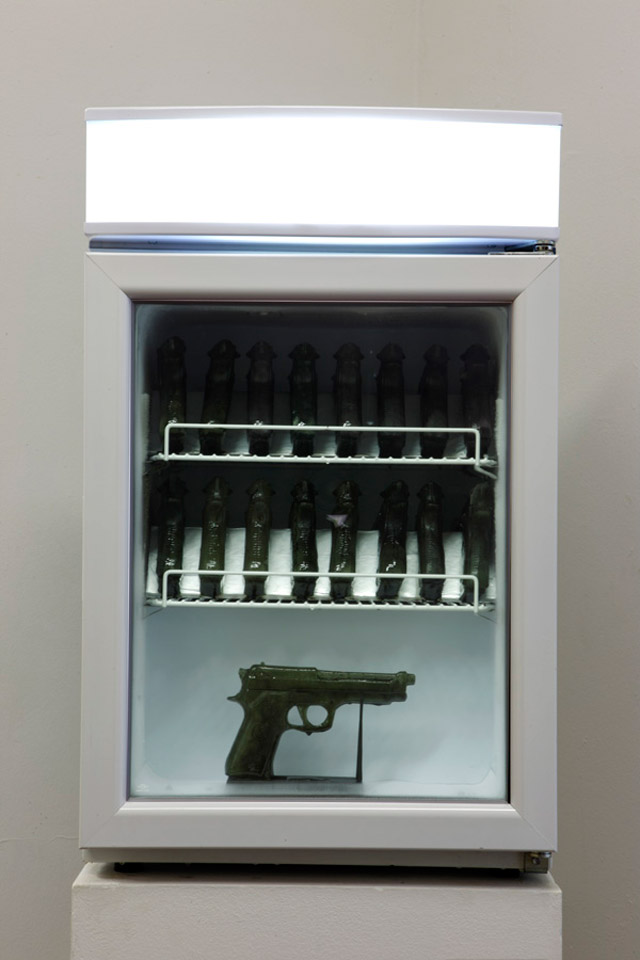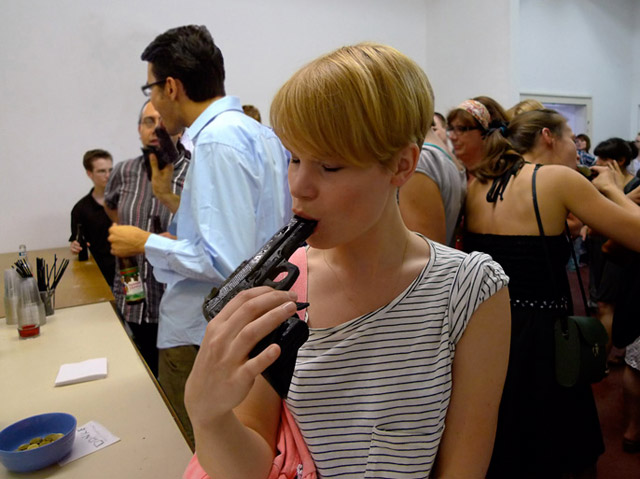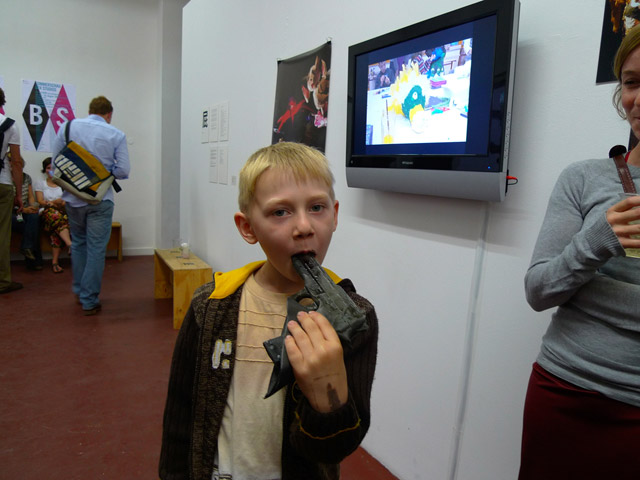
Image Credit: "Freeze! Revisited" by Florian Jennet and Valentin Beinroth via todayandtomorrow.net
H/T to Ben Koch
Since the 1950s, the pop art movement has been challenging our ideas about mass-produced images and objects. Particularly by manipulating context, pop artists identify and exploit cultural trends. In a recent exhibition, two German artists explored the intersections of art, violence, and mistaken identities.

Image Credit: "Freeze! Revisited" by Florian Jennet and Valentin Beinroth via todayandtomorrow.net
The “guns” in these images are actually just gun-shaped popsicles. Even with contextualization, the images are striking, primarily because they reverse my expectations. The sensuality of the young woman contrasts ironically with her (essentially) suicidal pose. Given the other people in the background and the incongruity of her expression, it’s easier to disassociate the image with the potential violence it depicts.
The vending machine look of the freezer (above) provides an interesting commentary on contemporary issues of mass-produced violence and the widespread availability of weaponry. I don’t know much about gun politics in Germany, so maybe I’m just reading my own political views onto it. However, images from this project were featured in an issue of as|peers (an American Studies journal) that focused on America and Crime.
These images come from "Freeze! Revisted," the second version of Valentin Beinroth and Florian Jenett’s “Freeze” project. In the first project the ice guns were flavorless, not intended for consumption but just to “look real on first sight.” The artists enacted realistic situations with the ice guns and then discarded them in various places around Frankfurt – until the performances were stopped by the police.
For “Freeze! Revisited,” the edible ice guns were handed out to visitors. Whereas the first project left little visible record, this version resulted in an exciting archive of images.

Image Credit: "Freeze! Revisited" by Florian Jennet and Valentin Beinroth via todayandtomorrow.net
On the whole, I found the project delightfully morbid, and most of the images amused me thoroughly. The photo of the little boy, however, I find rather disturbing. Standing alone and gazing earnestly at the camera, the boy reverses the gaze and thereby implicates the spectator. Directly connecting youth and violence, this image loses the sense of irony that the project otherwise invokes.
Or, perhaps, irony was never the goal. The artists’ websites are largely written in German (which I don’t understand). So this brings up the interesting question of intentionality, especially across cultural divides. Is my reading of these images as anti-gun, pro-gun-control any less valid though the “text” is German and I’m American? Were these ever meant to be ironic? Or were they intended to shock instead of amuse? Does intentionality even matter if I can’t access it?



Comments
Interesting exhibit
You raise really interesting questions! One of the details that stuck out to me was that they flavored the popsicles before giving them to people to consume. Presumably, then, the act of eating the popsicle was pleasurable, which to me seems to hint at a dual function, at least for different groups. Maybe it suggests that consumption of violence (or violent objects?) is a sort of "wrong" pleasure, one that can be amusing for the consumers but jarring for those watching them?
It would be interesting to get students to talk about this as well, particularly with your questions about context. The instructor could ask students to think how these images and this exhibit might have different effects on different audiences, or how it could have been framed differently to achieve different effects.